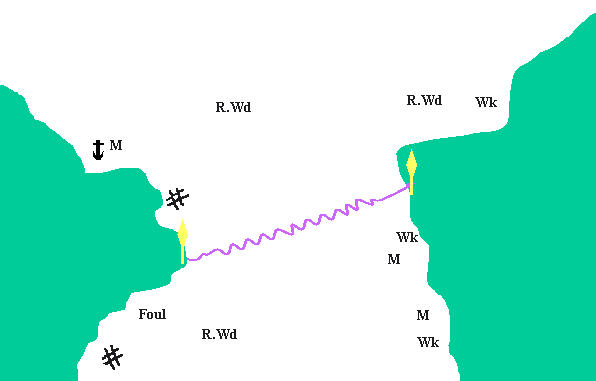Factors affecting the decision of where to anchor
- Depth: Is the water shallow enough for the length of cable carried?
- Local bylaws: Busy harbours may ban anchoring altogether, and certainly, it is not advisable to anchor in the fairway of busy harbours.

- Anchor watch: Do you need to set an anchor watch? Not a popular plan, with most people on holiday. Will the anchor alarm on the echo-sounder or GPS be sufficient to warn you if the anchor drags?
- Shelter: One of the main reasons to anchor is to stop and rest. If the boat is rolling and bouncing you will not find the stay very restful, especially at night. The best anchorage is usually at a point where the wind is offshore and there is little current. Consider that a place which is completely sheltered when you arrive may well change completely if the wind direction shifts or the tide runs in a different direction.
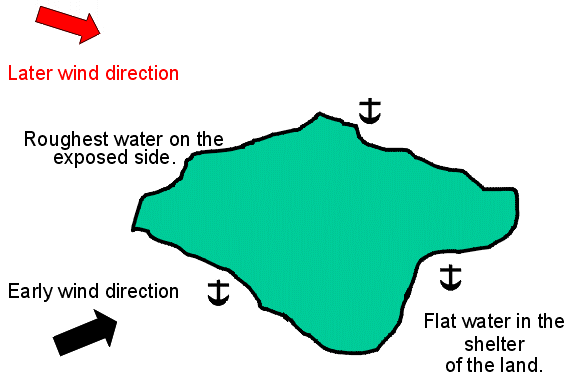
- Holding: The quality of the bottom is indicated on the chart. Ideal materials are mud and sand; both will provide a good surface for the anchor to dig into. The worst holding is often in rock and weed, weeds tend to bind around the anchor and prevent it from digging in. An anchor will only hold on a rock bottom when it hooks into a protrusion or crack in the rocks and if the wind or current change the anchor will drag until it catches on something else.
Hydrographic publication 5011, Symbols and Abbreviations, gives the full range of abbreviations used on Admiralty charts. All yachts should have a copy of this booklet aboard, one can be ordered here.
M = Mud
R = Rock
Wd = Weed
Wk = Wreck
- Obstructions on the bottom: Before anchoring check the chart for cables or gas pipes, the shoreward ends may be marked by diamond shaped yellow or white signs. There may also be wrecks or remains of wrecks on the bottom; these may be marked by the word Foul or the symbol #. Often areas where there are obstructions or it prohibited to anchor have an anchor symbol with a cross and perhaps a limit symbol.
- Facilities: Is it possible to land, are there any facilities once you get there? A good pub is always nice! Remember that a beach which is easy to cross in one tidal condition may change or disappear completely when the tide changes.
- Departure in an emergency: If the conditions change, can you leave the anchorage in a hurry, perhaps in the dark? It may be a good idea to pre-plan clearing lines for a night- time departure.
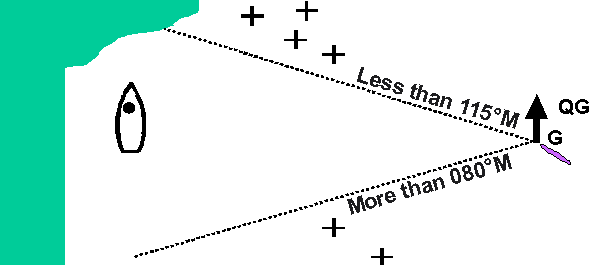
In the above example, keeping the Quick green flashing light on the buoy on a bearing of between 080 and 115 degrees will ensure that you pass between the rocks. Note that if there is a tide running, these clearing lines may be very different to the course the vessel may have to steer.
- Swinging room: When the wind or the tide change the boat will swing to a new direction, will it swing clear of moored vessels, the shore or any obstructions?
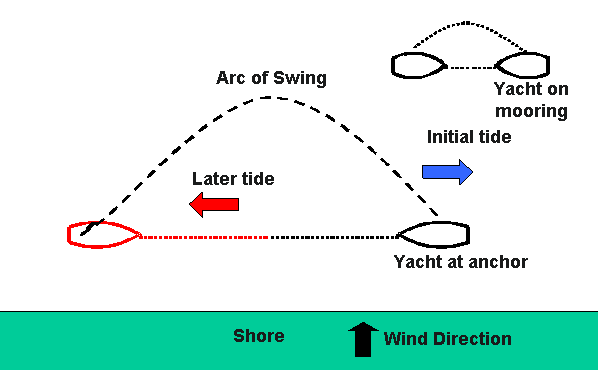
- Crowded anchorages: In a crowded anchorage, it is often better to motor close up the stern of a similar vessel to your own which is already at anchor, lower your anchor, then drop back away from the other craft as the chain pays out. This will make the most of the available space.
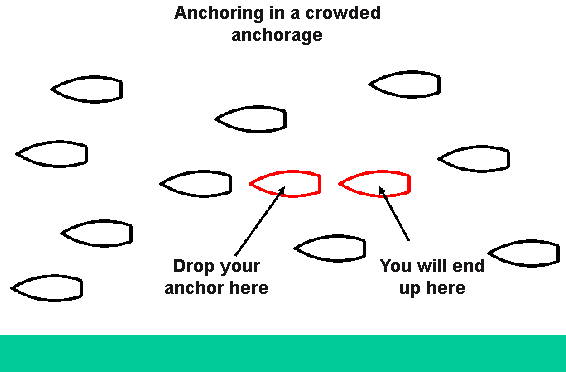
- Tripping Line: A tripping line is a line attached to the lower end of the anchor. It enables you to upend the anchor if it becomes stuck under an obstruction. The disadvantages are that you or another vessel can catch them on the propeller or another vessel may try to use it as a mooring buoy! I would normally only advocate the use of a tripping line if I was in a place where there may be debris on the bottom, such as in a harbour area.
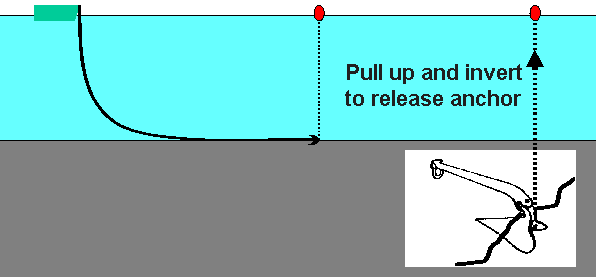
Sailtrain.co.uk is free to use, but if you feel you would like to contribute to the running and development costs you can donate via Paypal:
Additional Resources:


